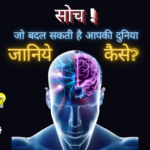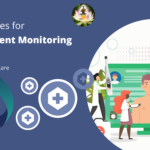Blockchain in Healthcare Industry : Telemedicine and Remote Patient Monitoring
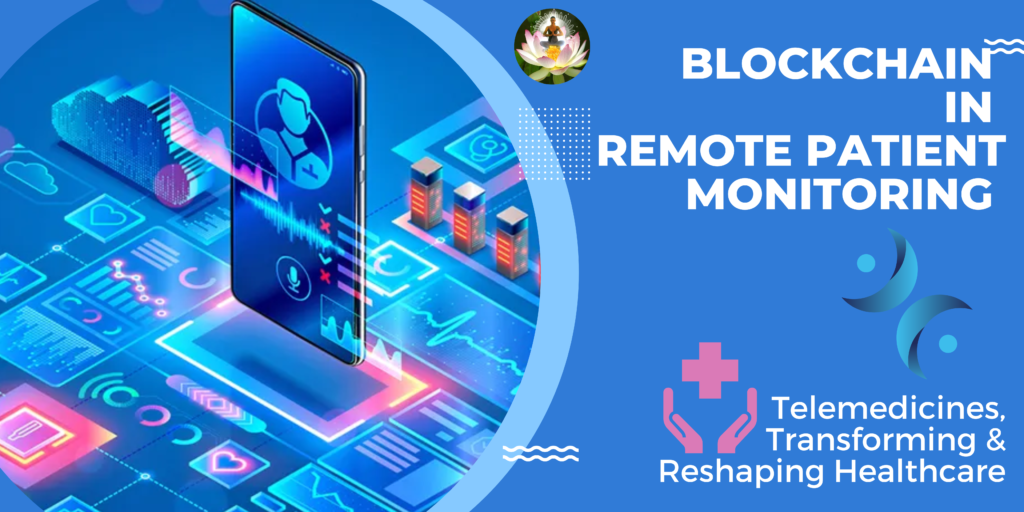
In the rapidly evolving landscape of healthcare, telemedicine and remote patient monitoring have gained significant importance, especially in situations where physical access to healthcare facilities is limited or challenging. Blockchain technology has the potential to enhance the security, privacy, and transparency of telemedicine services and remote patient monitoring.
Blockchain can support secure and transparent telemedicine services and remote patient monitoring. Use of Blockchain in Remote Patient monitoring (RPM) & telemedicine services can enable secure storage and sharing of telemedicine records, patient-generated health data, and IoT device data, ensuring privacy and data integrity.
Let’s delve deeper into how Blockchain in Remote Patient monitoring (RPM) can be implemented in this context
1. Data Security and Privacy
- Decentralized Data Storage: Blockchain in Remote Patient monitoring (RPM) offers a decentralized storage solution that can prevent single points of failure, making patient data less susceptible to breaches. Traditional data storage systems are vulnerable to breaches due to centralized points of failure. In contrast, blockchain’s decentralized architecture spreads data across a network of nodes, making it nearly impervious to hacking attempts.
- Patient-Centric Data Control: Patients using RPM services can rest assured that their data is stored securely and privately. Each patient’s data is stored in a tamper-proof block, ensuring its integrity and preventing unauthorized access. In use of Blockchain in Remote Patient monitoring (RPM), Patients can have direct control over who accesses their medical data and for what purpose. They can grant temporary access to healthcare providers during telemedicine sessions while retaining ownership of their information.
2. Immutable Health Records
Data Integrity: In case use of Blockchain in Remote Patient monitoring (RPM), Information captured during telemedicine sessions and remote monitoring is stored as unalterable records on the blockchain. This immutability guarantees the accuracy and authenticity of patient data, reducing the risk of tampering. In traditional systems, altering health records, whether intentionally or accidentally, can lead to incorrect diagnoses and treatment plans. Blockchain in RPM mitigates this risk by providing an unchangeable history of health data.
3. Secure Communication
- End-to-End Encryption: During use of Blockchain in Remote Patient monitoring (RPM), Blockchain-based communication systems can utilize end-to-end encryption, ensuring that sensitive health data shared during telemedicine consultations remains private and secure.
- Timestamps and Audit Trails: During use of Blockchain in Remote Patient monitoring (RPM), Timestamps added to communication records and medical data entries on the blockchain create an audit trail that can be useful for regulatory compliance and accountability.
4. Interoperability and Data Exchange
One of the challenges in telemedicine and RPM is the fragmentation of healthcare data across various platforms and providers.
- Seamless Data Sharing: In case use of Blockchain in Remote Patient monitoring (RPM), Blockchain’s interoperability capabilities enable secure and seamless sharing of patient data across different telemedicine platforms and healthcare providers, promoting better care coordination.
- Consolidated Patient Profiles: In case use of Blockchain in Remote Patient monitoring (RPM), Patients’ medical histories and data from multiple sources can be consolidated on the blockchain, providing a comprehensive view to healthcare providers during telemedicine sessions.
5. Smart Contracts for Automation
Blockchain technology introduces smart contracts, which can automate various aspects of RPM and telemedicine services.
- Appointment Scheduling: In case use of Blockchain in Remote Patient monitoring (RPM), Smart contracts can automate the scheduling of telemedicine appointments, ensuring that both patients and healthcare providers are available at the designated time.
- Payment and Reimbursement: During use of Blockchain in Remote Patient monitoring (RPM), Smart contracts can facilitate automatic payment processing and reimbursement for telemedicine services, reducing administrative overhead.
6. Device Data Integration
IoT Device Integration: During use of Blockchain in Remote Patient monitoring (RPM), Blockchain can securely integrate data from IoT devices used for remote patient monitoring, such as wearable fitness trackers or medical sensors. These devices collect valuable health data and transmit it to healthcare professionals for analysis. This ensures that the data is accurate, tamper-proof, and easily accessible for healthcare professionals.
7. Patient Consent Management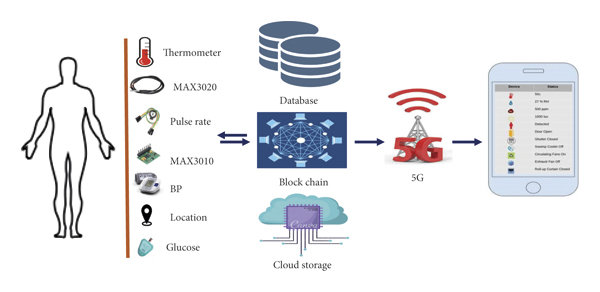
Granular Consent Control: In case use of Blockchain in Remote Patient monitoring (RPM), Patients can grant explicit consent for sharing specific data with healthcare providers for telemedicine consultations. Blockchain-based consent management provides transparency and traceability. It also ensures compliance with privacy regulations and ethical standards in healthcare.
8. Research and Analytics
Aggregated and Anonymized Data: In case use of Blockchain in Remote Patient monitoring (RPM), Blockchain can enable secure aggregation and anonymization of telemedicine and remote monitoring data, making it available for medical research and population health studies while protecting patient identities. Researchers can gain insights into disease trends, treatment effectiveness, and healthcare outcomes, ultimately leading to improvements in healthcare quality.
9. Medical Identity and Fraud Prevention
- Secure Identity Verification: During use of Blockchain in Remote Patient monitoring (RPM), Patients’ digital identities on the blockchain can prevent fraudulent activities during telemedicine consultations and remote monitoring sessions. Secure identity verification ensures that patients are who they claim to be, reducing the risk of identity theft and medical fraud.
- Reduced Misdiagnosis: In case use of Blockchain in Remote Patient monitoring (RPM), Access to accurate and up-to-date medical histories through blockchain can minimize misdiagnoses, as healthcare providers have a more complete view of patients’ health conditions.
10. Emergency Situations

Access to Critical Information: In case use of Blockchain in Remote Patient monitoring (RPM) and emergency telemedicine scenarios, blockchain can provide quick access to essential patient information, ensuring timely and informed medical decisions. Whether a patient is unconscious or unable to provide critical medical history, blockchain’s secure and accessible records can be life-saving.
Conclusion
Implementing blockchain in remote patient monitoring (RPM) and telemedicine services, offers a robust solution to enhance data security, patient privacy, interoperability, and automation. By ensuring the integrity and accessibility of medical data, blockchain technology contributes to the seamless delivery of healthcare services regardless of geographical barriers, improving patient outcomes and overall healthcare quality. Blockchain in RPM is not just a technological advancement; it’s a transformative force in shaping the future of healthcare delivery.
Blockchain & Medical IOT Devices for Remote Patient Monitoring
IOT Devices for Remote Patient Monitoring with Blockchain Integration
Integrating IoT devices with blockchain technology can provide several advantages for remote patient monitoring, including enhanced security, data integrity, and patient privacy. Some IoT devices that can be used for remote patient monitoring and integrated with blockchain include:
1. Wearable Health Monitors
These devices can track a range of health metrics and send the data to the blockchain for secure storage and sharing.
2. Smart Pill Dispensers 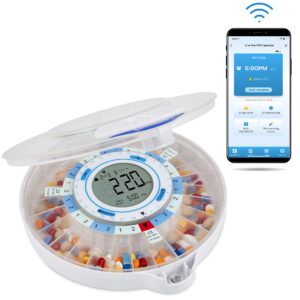
These devices can use blockchain to ensure accurate medication tracking and dispensing.
3. Implantable Medical Devices
Implants like pacemakers can be connected to the blockchain to securely transmit real-time health data to medical professionals.
4. Smart Medical Sensors
Various medical sensors (temperature, blood pressure, etc.) can be integrated with blockchain to securely transmit data.
List of IoT Devices for Remote Patient Monitoring with Blockchain Integration
- Wearable health monitors (smartwatches, fitness trackers)
- Smart pill dispensers
- Implantable medical devices (pacemakers, insulin pumps)
- Smart medical sensors (temperature, blood pressure, glucose)
Wearables and Fitness Trackers for Remote Patient Monitoring
Wearable fitness trackers can also serve as remote patient monitoring tools, as they often include sensors for tracking various health metrics. Some popular wearables include:
- Fitbit devices (e.g., Fitbit Charge, Fitbit Versa)
- Apple Watch
- Garmin fitness trackers
- Samsung Galaxy Fit
- Xiaomi Mi Band

Read more about Use of Blockchain Technology in Healthcare Sector at LinkedIn Click here





